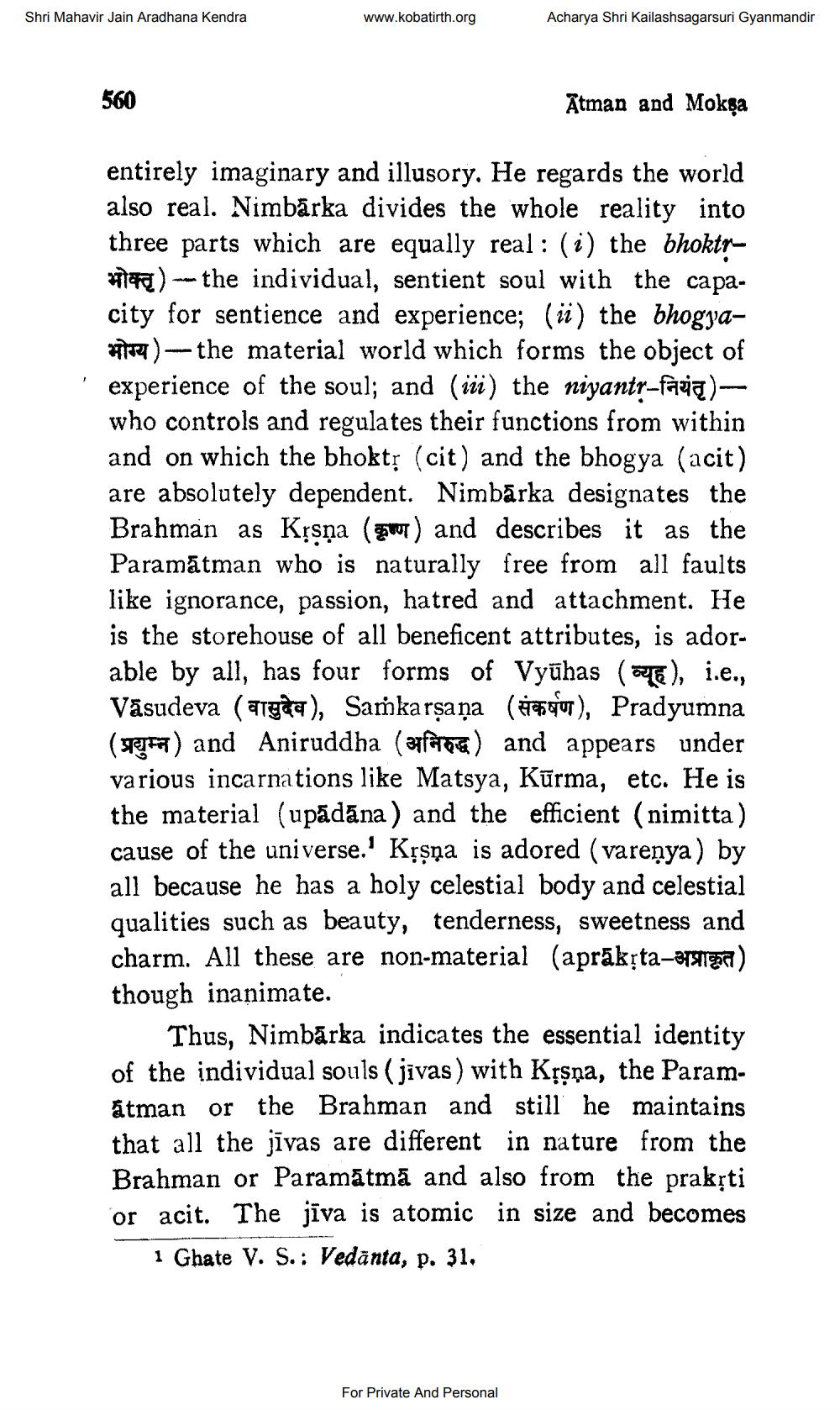________________
Shri Mahavir Jain Aradhana Kendra
560
www.kobatirth.org
Acharya Shri Kailashsagarsuri Gyanmandir
Atman and Mokṣa
entirely imaginary and illusory. He regards the world also real. Nimbārka divides the whole reality into three parts which are equally real: (i) the bhoktṛthe individual, sentient soul with the capacity for sentience and experience; (ii) the bhogya
-the material world which forms the object of experience of the soul; and (iii) the niyantṛ-facią) — who controls and regulates their functions from within and on which the bhokt (cit) and the bhogya (acit) are absolutely dependent. Nimbārka designates the Brahman as Kṛṣṇa () and describes it as the Paramatman who is naturally free from all faults like ignorance, passion, hatred and attachment. He is the storehouse of all beneficent attributes, is adorable by all, has four forms of Vyuhas (), i.e., Vasudeva (arg), Samkarṣaṇa (), Pradyumna ( प्रद्युम्न) and Aniruddha (अनिरुद्ध) and appears under various incarnations like Matsya, Kurma, etc. He is the material (upādāna) and the efficient (nimitta) cause of the universe.' Kṛṣṇa is adored (varenya) by all because he has a holy celestial body and celestial qualities such as beauty, tenderness, sweetness and charm. All these are non-material (aprākṛta-) though inanimate.
For Private And Personal
Thus, Nimbārka indicates the essential identity of the individual souls (jivas) with Kṛṣṇa, the Paramatman or the Brahman and still he maintains that all the jīvas are different in nature from the Brahman or Paramātmā and also from the prakṛti or acit. The jiva is atomic in size and becomes
1 Ghate V. S.: Vedānta, p. 31.




